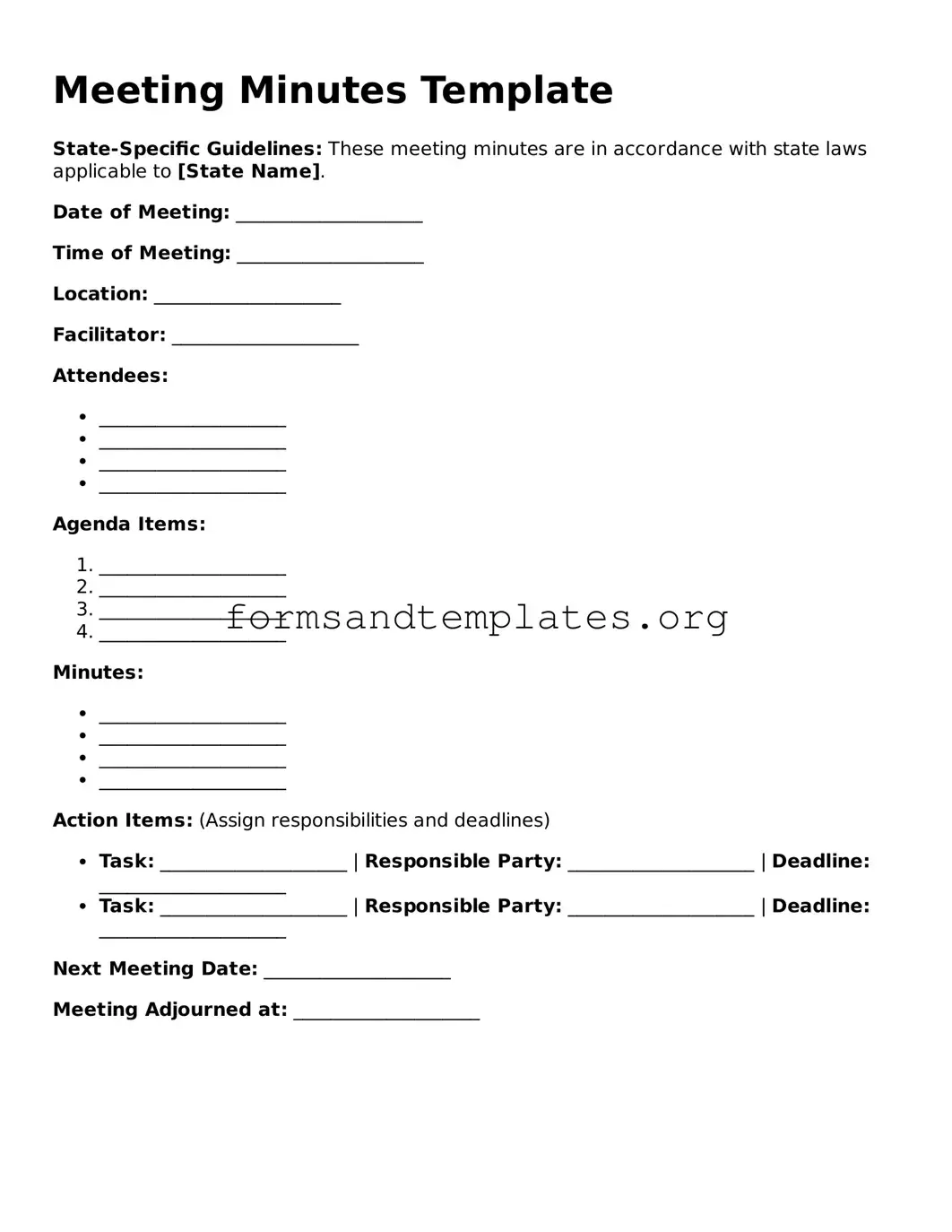The Meeting Minutes form serves as an official record of discussions, decisions, and action items from a meeting. It ensures that all participants have a clear understanding of what transpired and provides a reference for future meetings. By documenting key points, the form helps maintain accountability and continuity within teams.
Typically, the responsibility of completing the Meeting Minutes form falls to the designated note-taker or secretary of the meeting. However, anyone can take on this role, as long as they are attentive and able to accurately capture the essential details of the discussion.
When filling out the Meeting Minutes form, consider including the following key elements:
-
Date and time of the meeting
-
List of attendees and absentees
-
Agenda items discussed
-
Decisions made and action items assigned
-
Next meeting date, if applicable
Including this information helps ensure that all relevant details are captured for future reference.
How soon should the Meeting Minutes be distributed?
It is best practice to distribute the Meeting Minutes within 24 to 48 hours following the meeting. This prompt distribution allows participants to recall discussions while the information is still fresh in their minds. Timely sharing also aids in the execution of assigned action items.
Can the Meeting Minutes be edited after distribution?
Yes, the Meeting Minutes can be edited after distribution if inaccuracies are identified. However, it is important to communicate any changes to all attendees. Transparency is key; it helps maintain trust and ensures everyone is on the same page regarding decisions and action items.
What if someone disagrees with the recorded minutes?
If a participant disagrees with the recorded minutes, they should address their concerns with the note-taker or meeting facilitator. Open communication is encouraged. Clarifying any discrepancies can lead to a more accurate record, ensuring that everyone’s perspective is respected and acknowledged.
Are Meeting Minutes required for every meeting?
While not every meeting may require formal minutes, it is advisable to document minutes for significant discussions, decision-making sessions, or meetings involving multiple stakeholders. Having a record can provide clarity and serve as a reference point for future actions.
How can I improve my minute-taking skills?
Improving minute-taking skills involves practice and attention to detail. Here are some tips:
-
Prepare in advance by reviewing the agenda and any relevant materials.
-
Focus on key points, decisions, and action items rather than trying to capture every word spoken.
-
Use clear and concise language.
-
Familiarize yourself with common abbreviations and formats.
With time and experience, minute-taking can become a more manageable and efficient task.
